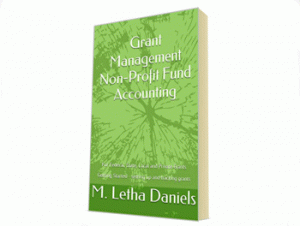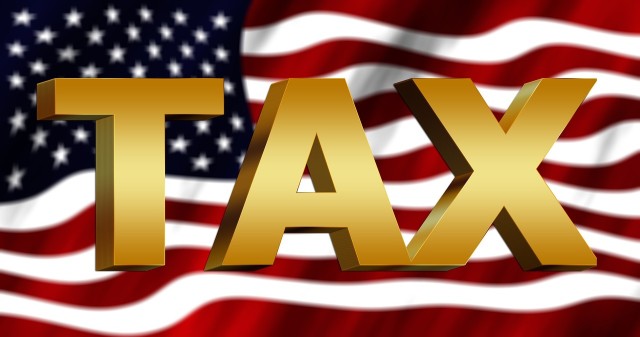Ever wonder what the IRS Subsection codes stand for?
Below is a list of the codes and what they stand for. Most, if not all, of the information provided on this site concerns subsection
501 (C)3 but the information I provide is so basic that every type of organization whether non-profit, for profit and any of the subsection designations can benefit from the information provided. If you are forming or with a For-profit Company join our mailing list or keep checking back to find out how you can benefit from the information provided in our Grant Management book for non-profit organizations.
The following is provided by The National Center for Charitable Statistics. Click here for more information
| IRS Subsection Code | Name |
| 501(c)(1) | Corporations organized under act of Congress |
| 501(c)(2) | Title-holding corporations for Single Parent Organizations |
| 501(c)(3) | Charitable and religious |
| 501(c)(4) | Social Welfare Orgs Seven of 10 of the largrest organizations by gross receipts are in the health care field, and provide social welfare services, such as dental benefit coverage or medicaid and medical and prescription drug services. However, among the smaller organization |
| 501(c)(5) | Labor, Agricultural Organizations Most of the largest organizations by gross receipts and total assets are labor unions “providing services to working and retired members, or collective bargaining to improve jobs, and promote fairness and equality on the job and in society.” (IRS) Example |
| 501(c)(6) | Business Leagues Included are “business leagues [such as trade associations and professional associations], chambers of commerce, real estate boards, boards of trade, and professional football leagues.”(IRS) Services in many such organizations include protection of profes |
| 501(c)(7) | Social and Recreational Clubs “[Clubs] created for pleasure, recreation, or other similar purpose.” (IRS) Many of the largest social clubs by gross receipts and total assets are university-based, honor societies, fraternities & sororities, and athletic clubs. Smaller organizations inc |
| 501(c)(8) | Fraternal Beneficiary Societies “[Organizations in this category] not only include fraternal activities, but also provide for the payment of life, sick, accident, or other benefits to the members of such society or their dependents.” (IRS) For example, Modern Woodmen Society of America |
| 501(c)(9) | Voluntary Employees Beneficiary Associations These are organizations created to pay life, sick, accident, and similar benefits to members, their dependents, or other beneficiaries. Membership consists of individuals who are employees who have an employment-related common bond, such as a common emplo |
| 501(c)(10) | Domestic Fraternal Beneficiary Societies Around 40% of the largest organizations by gross receipts and total assets are regional branches of Free and Accepted Masons, whose purpose is to carry out the mission of the Freemasonry, to provide support services, masonic education, and/or other servic |
| 501(c)(11) | Teachers Retirement Funds Reporting assets or income are only eight organizations.They are teachers retirement fund associations or teachers annuity and aid associations. |
| 501(c)(12) | Benevolent Life Insurance Associations Represented are “benevolent life insurance associations, mutual ditch or irrigation companies, mutual or cooperative telephone companies, etc.” (IRS) 501(c)(12)s are usually “organized and operated on a mutual or cooperative basis.” (IRS) All of the large |
| 501(c)(13) | Cemetery Companies Included are cemeteries or corporations chartered to operate “solely for the purpose of the disposal of human bodies by burial or cremation.” (IRS) |
| 501(c)(14) | State Chartered Credit Unions, Mutual Reserve Funds Prevalent are regional credit unions, such as Credit Unions Chartered in the State of Wisconsin, Credit Unions Chartered in Colorado, Ohio Chartered Credit Unions, etc. The credit unions do not have capital stock, and are “organized and operated under sta |
| 501(c)(15) | Mutual Insurance Companies or Associations The largest organizations by gross receipts and total assets are in the business of insurance, marshaling financial activities, assets, and estate administration. Included are insurance companies in receivership or in liquidation. |
| 501(c)(16) | Cooperative Organizations to Finance Crop Operations Many organizations (about 50%) are Livestock Credit Associations or Corporations, which provide funds to members for the purchase of cattle, or for other similar purposes in the cattle breeding industry. |
| 501(c)(17) | Supplemental Unemployment Benefit Trusts 501(c)(17) organizations, along with 501(c)(4) and 501(c)(9) organizations, are a type of employees associations. 501(c)(17) entities primary purpose is “providing for payment of supplemental unemployment benefits.” (IRS) |
| 501(c)(18) | Employee Funded Pension Trusts One organization reports assets or income within this classification, the Inter-Local Pension Fund Gciu. |
| 501(c)(19) | War Veterans Organizations Qualified are “posts or organizations of past or present members of the Armed Forces of the United States.” (IRS) Examples are posts or auxiliaries of the American Legion, Veterans of Foreign Wars, Air Force Association, Marines Memorial Association, etc. |
| 501(c)(20) | Legal Service Organizations “An organization or trust created in the U.S. for the exclusive function of forming a part of a qualified group legal services plan or plans cannot be exempt under section 501(c)(20) after June 30, 1992. However, it may qualify for exemption under section |
| 501(c)(21) | Black Lung Trusts Established to satisfy claims under the Black Lung Act. No organizations report assets or income. Only 28 organizations are currently registered with the IRS. (IRS Business Master File, 11/2006) |
| 501(c)(22) | Multiemployer Pension Plans No organizations are currently registered with the IRS. (11/2006 IRS Business Master File) |
| 501(c)(23) | Veterans Associations Founded Prior to 1880 The only two organizations registered with this subsector code that also report assets and income are Navy Mutual Aid Association, and Army & Air Force Mutual Aid Association. |
| 501(c)(24) | Trusts Described in Section 4049 of ERISA No organizations report assets or income. Only one organization, Spring Prairie Hutterian Brethren Inc., is registered as a 501(c)(24) entity. (NCCS BMF data, November 2006) |
| 501(c)(25) | Title-Holding Corporations or Trusts for Multiple Parents This type of title-holding organization is either a corporation or a trust, “organized for the exclusive purpose of acquiring, holding title to, and collecting income from real property, and turning over the entire amount less expenses to member organizat |
| 501(c)(26) | State-Sponsored High-Risk Health Coverage Organizations (IRS) Nine organizations report assets or income. |
| 501(c)(27) | State-Sponsored Workers Compensation Reinsurance Organizations (IRS) Reimburses members for losses under workers� compensation acts. Four organizations report assets or income. |
| 501(d) | Religious and Apostolic Organizations |
| 501(e) | Cooperative Hospital Service Organizations |
| 501(f) | Cooperative Service Organizations of Operating Educational Organizations |
| – | Charitable Risk Pool |
| 521 | Farmers Cooperatives |
| 527 | Section 527 Political Organizations |
| 4947(a)(2) | Split Interest Trust |
| 4947(a)(1) | Private Foundations |
Resource for Fiscal Compliance

You will find this book to be invaluable when setting up and maintaining your systems for non-profit finance, compliance and reporting and organizational status reports to your Board of Directors and other interested parties. In addition to performing deliverables, as specified in your program plan, timely and effectively, you should not have to worry about discontinued funding due to non-compliance.


